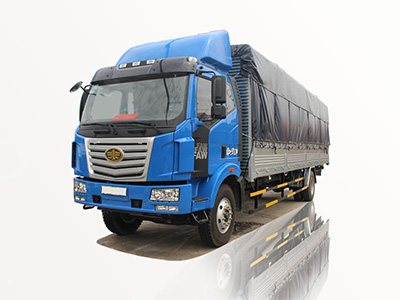Mini trucks have become increasingly popular in various industries and communities worldwide. Their compact size, efficiency, and versatility make them suitable for both urban and rural settings. In this comprehensive article, we will delve into mini truck specifications, exploring their features, benefits, types, and more. By the end, you’ll have a thorough understanding of what makes mini trucks a viable transportation option.
Table of Contents
- What is a Mini Truck?
- Types of Mini Trucks
- Key Specifications of Mini Trucks
- Engine Specifications
- Dimensions and Capacity
- Features and Options
- Safety Features
- Practical Use Cases for Mini Trucks
- Maintenance Tips for Mini Trucks
- Frequently Asked Questions
What is a Mini Truck?
A mini truck is a small, lightweight, and versatile vehicle designed primarily for transporting goods and passengers. Originally popularized in Japan, these trucks are optimized for urban environments due to their compact structure. Mini trucks are often characterized by their low loading height, small turning radius, and efficient fuel consumption.
Types of Mini Trucks
1. Kei Trucks
Kei trucks are a classification of mini trucks in Japan, optimized for small size and engine capacity. They typically have a 660cc engine and are designed to maximize interior space.
2. Dump Trucks
Mini dump trucks feature a hydraulic dump bed that allows for easy unloading of materials. They are useful in construction and landscaping operations.
3. Flatbed Trucks
These trucks offer a flat, open bed, making them ideal for transporting larger, bulkier items. They can often be fitted with additional accessories for specialized tasks.
4. Cargo Vans
Cargo vans are enclosed mini trucks that provide additional security for goods transported, protecting them from weather and theft.
Key Specifications of Mini Trucks
| Specification | Description |
|---|---|
| Engine Type | 4-cylinder engine, typically gasoline or diesel. |
| Payload Capacity | Usually between 1,000 to 1,800 lbs. |
| Fuel Efficiency | Averages 25-40 MPG, depending on the model. |
| Drive Type | Available in 2WD and 4WD options. |
| Wheelbase | Commonly between 70 to 100 inches. |
Engine Specifications
Understanding the engine specifications of mini trucks is crucial for determining performance and efficiency. Here are some common engine specifications:
| Model | Engine Type | Horsepower | Torque |
|---|---|---|---|
| Daihatsu Hijet | 660cc, 3-cylinder | 40-50 HP | 50-60 lb-ft |
| Suzuki Carry | 660cc, 3-cylinder | 45-55 HP | 55-65 lb-ft |
| Honda Acty | 660cc, 3-cylinder | 50 HP | 45 lb-ft |
Dimensions and Capacity
The compact nature of mini trucks allows them to fit into tight spaces, making them great for city driving. Department dimensions typically include:
| Model | Length | Width | Height | Bed Size |
|---|---|---|---|---|
| Daihatsu Hijet | 131.7 inches | 58.1 inches | 70.9 inches | 85.8 x 54.3 inches |
| Suzuki Carry | 132.7 inches | 64.6 inches | 71.1 inches | 72.1 x 53.1 inches |
| Honda Acty | 129.9 inches | 58.7 inches | 70.9 inches | 76.4 x 54.3 inches |
Features and Options
1. Air Conditioning
Many modern mini trucks can come equipped with air conditioning, making them comfortable for long drives.
2. Four-Wheel Drive
Off-road capabilities can expand significantly when opting for a 4WD mini truck for better traction on rough terrains.
3. Additional Storage Options
Many mini trucks feature additional compartments and under-seat storage for tools, equipment, or personal items.
Safety Features
Mini trucks often feature several safety options to protect drivers and passengers, such as:
- Anti-lock Braking System (ABS)
- Seat belts for all passengers
- Crumple zones for enhanced crash safety
- Rear and side view cameras for easier navigation
Practical Use Cases for Mini Trucks
1. Delivery Services
Mini trucks are perfect for small parcel deliveries in urban areas. Their compact size allows them to reach locations where larger delivery vehicles cannot go.
2. Landscaping
For landscapers, mini trucks are invaluable for hauling plants, soil, and equipment, thanks to their cargo capacity and versatility.
3. Farming
Farmers often use mini trucks for transporting produce, tools, or livestock feed across fields, benefitting from their ability to maneuver on uneven terrain.
Maintenance Tips for Mini Trucks
1. Regular Oil Changes
Routine oil changes are crucial for engine longevity. Always check the manufacturer’s recommendations for the right intervals.
2. Tire Maintenance
Ensure your tires are properly inflated and rotated regularly to avoid uneven wear and maintain traction.
3. Brake Inspecting
Check brake pads and discs often to ensure they are in working condition, replacing them when necessary for safety.
Frequently Asked Questions
1. What is the average price of a mini truck?
The price of a mini truck can vary significantly depending on the make, model, and year, typically ranging from $5,000 to $20,000.
2. Are mini trucks fuel-efficient?
Yes, mini trucks are generally fuel-efficient, averaging between 25 to 40 miles per gallon, depending on the model and driving conditions.
3. Can mini trucks be imported?
Yes, many people import mini trucks for personal or commercial use. It’s essential to check local regulations regarding emissions and safety standards.
4. Are mini trucks suitable for off-road use?
Some mini trucks offer 4WD options, making them suitable for off-road use, especially in areas with rough terrain.
5. What kind of warranty is typical for mini trucks?
Mini trucks typically come with a warranty that lasts between 3 to 5 years or a specific mileage, whichever comes first, covering defects and maintenance issues.
6. How much weight can a mini truck carry?
The payload capacity of a mini truck usually ranges from 1,000 to 1,800 lbs, depending on the model and manufacturer.





